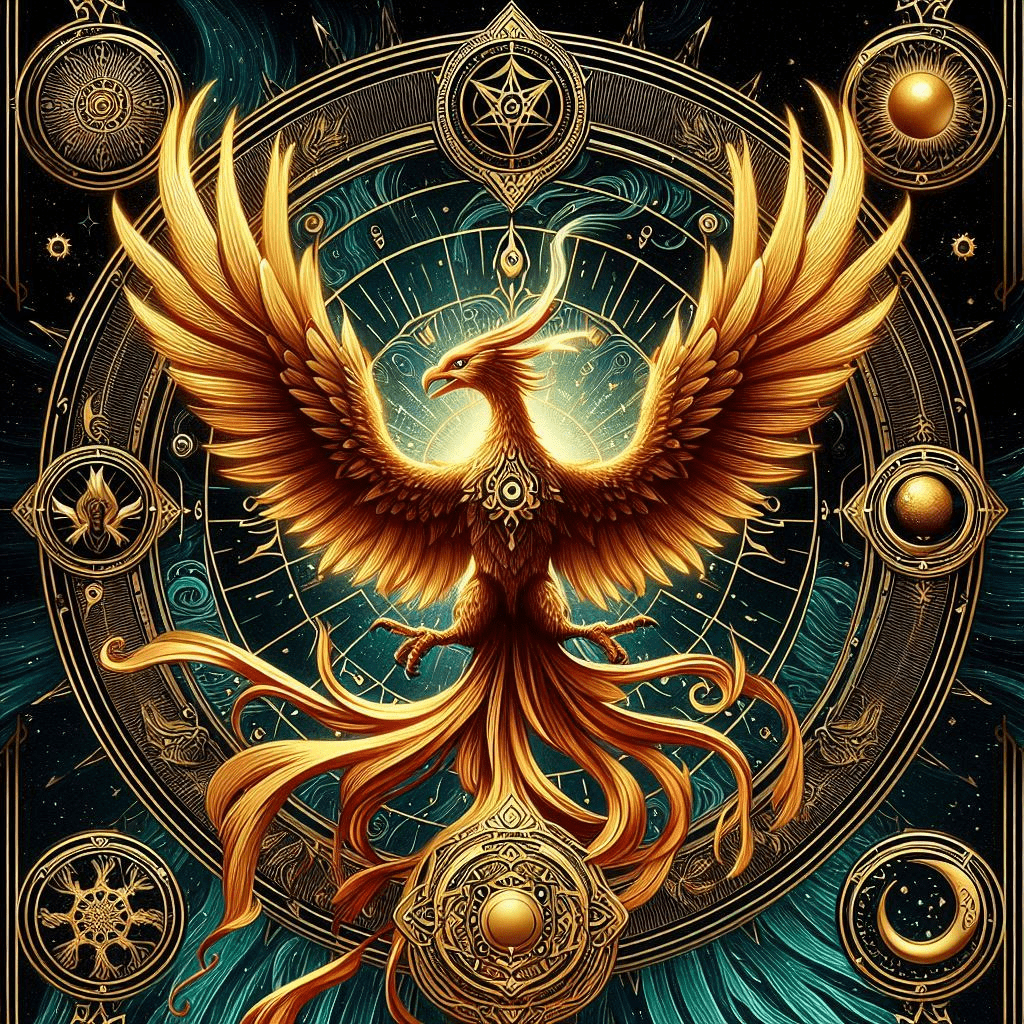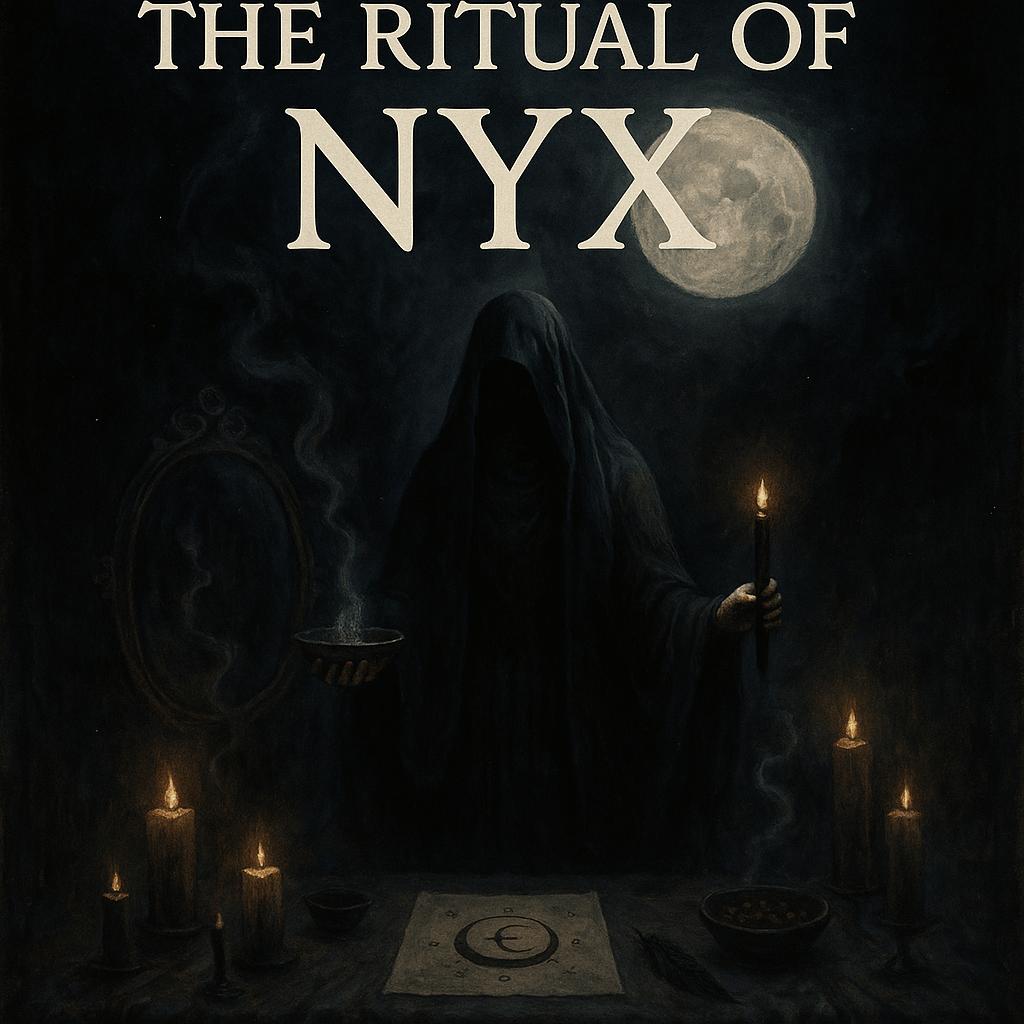Your cart is currently empty!

The Phoenix: A Mythical Bird of Rebirth, Magic, and Eternity
Few symbols in mythology resonate as universally and powerfully as the phoenix, a mythical bird shrouded in flame and mystery. Across cultures and epochs, the phoenix has captured the human imagination with its tale of death, renewal, and immortality. This extraordinary creature, known for its ability to rise from its ashes, embodies themes of resilience, transformation, and hope, making it a timeless symbol in folklore, philosophy, art, and literature. From its origins in ancient Egypt to its manifestations in Greek, Roman, Chinese, and Persian traditions, the phoenix represents the magical cycles of destruction and rebirth.
This article explores the origins, cultural interpretations, and magical qualities of the phoenix, tracing its evolution from a sacred creature of the sun to a universal symbol of human resilience. Through the mythic lens of civilizations, the phoenix becomes more than just a bird of legend—it is an archetype of renewal that has inspired awe and wonder for thousands of years.
Origins in Egyptian Mythology: The Bennu Bird
The earliest origins of the phoenix can be traced to ancient Egypt, where the bennu bird—a precursor to the phoenix—was a central figure in Egyptian cosmology and religion. According to legend, the bennu bird emerged at the dawn of creation from the primordial waters of chaos. Perched on a sacred stone, its cry was said to herald the beginning of the world.
The Egyptians revered the bennu bird as the soul of the sun god Ra and a symbol of eternal life. Depictions of the bennu bird often show it as a heron with long legs, a curved beak, and radiant feathers of gold and crimson, echoing the hues of the sunrise. The bird was also linked to Osiris, the god of death and rebirth, further solidifying its association with renewal and resurrection.
Every 500 years, the bennu bird was believed to build a nest of aromatic spices such as myrrh and frankincense atop the obelisks of Heliopolis. In this magical ritual, the bird would ignite the nest and be consumed by flames, only to rise again from the ashes as a youthful and vibrant creature. This cycle mirrored the sun’s daily journey across the sky and the flooding of the Nile, which brought life and renewal to the Egyptian people. The bennu bird’s tale set the stage for the phoenix’s later evolution into a symbol of cosmic balance, immortality, and divine power.
The Greek Phoenix: A Song of Fire and Eternity
The Greeks adopted and transformed the Egyptian myth, shaping the phoenix into a fiery, otherworldly being of unparalleled beauty and power. In Greek mythology, the phoenix was described as a radiant bird with feathers of gold, crimson, and purple, glowing as if imbued with the light of the sun. Unlike the bennu bird, the Greek phoenix was considered a singular, unique entity—there could only ever be one phoenix alive at a time.
The Greek version of the phoenix’s life cycle emphasized its incredible longevity, with some accounts claiming it lived for 500 years and others suggesting a lifespan of 1,000 years or more. When the phoenix sensed its end approaching, it would construct a funeral pyre from fragrant woods and spices. Once the pyre was complete, the bird would sing a hauntingly beautiful song, ignite the pyre, and be consumed by flames. From the ashes, a new phoenix would emerge, young and radiant, continuing the eternal cycle.
The phoenix held a special place in Greek thought as a symbol of immortality and cosmic renewal. The philosopher Heraclitus, for instance, used the phoenix to illustrate the eternal nature of change and transformation. In Greek culture, the phoenix was also associated with Helios, the sun god, whose fiery chariot traversed the heavens each day. Through its connection to the sun, the phoenix came to represent not only the passage of time but also the indomitable spirit of life.
Roman Interpretations: The Phoenix as an Imperial Emblem
The Romans inherited the Greek mythology of the phoenix and imbued it with new layers of meaning, particularly as a symbol of political power and endurance. To the Romans, the phoenix’s ability to rise from its ashes aligned perfectly with the image of the eternal Roman Empire. The bird became an imperial emblem, appearing on coins, mosaics, and frescoes to signify the empire’s resilience and renewal in the face of adversity.
Roman poets such as Ovid and Lucan described the phoenix in their works, adding poetic flourishes to its myth. Ovid’s Metamorphoses, for example, depicted the bird as a creature of divine origin, whose feathers glowed with the colors of the sunrise. Tacitus, the Roman historian, associated the phoenix with great cosmic cycles, believing its appearance heralded the beginning of a new age.
In Roman rituals, the phoenix became a symbol of continuity and renewal, invoked during ceremonies celebrating the city of Rome’s endurance. Its myth resonated with the Roman belief in the cyclical nature of history, with the rise and fall of empires mirroring the phoenix’s death and rebirth.
The Fenghuang of Chinese Mythology: A Bird of Harmony and Virtue
In Chinese culture, the phoenix takes on a distinct yet equally magical form as the fenghuang, a bird of extraordinary beauty, harmony, and virtue. Unlike the solitary and fiery phoenix of Western traditions, the fenghuang is a benevolent creature associated with balance, prosperity, and peace. Often depicted as a composite bird with features from a golden pheasant, peacock, and mandarin duck, the fenghuang’s vibrant feathers are said to glow with the five sacred colors, symbolizing the five elements—wood, fire, earth, metal, and water.
The fenghuang is deeply tied to Chinese philosophy and cosmology. It represents yin, the feminine principle, complementing the yang of the dragon. Together, the dragon and phoenix symbolize unity, balance, and marital harmony, often appearing in wedding traditions and imperial art. The fenghuang was also seen as an omen of great fortune, believed to appear only in times of prosperity and moral virtue.
In Chinese mythology, the fenghuang carries a mystical aura, often depicted as a guardian of sacred knowledge. Its song is said to calm the soul and restore balance to the world. The bird’s association with harmony and virtue makes it a symbol of the highest ideals in Confucianism and Daoism, linking it to both earthly and cosmic order.
The Simurgh in Persian Lore: A Guardian of Wisdom
In Persian mythology, the simurgh is a legendary bird that parallels the phoenix in its themes of renewal and transcendence. The simurgh is often depicted as a radiant bird with dazzling feathers that shimmer like sunlight on water. It is said to dwell in the highest branches of the mythical Tree of Life, connecting heaven and earth with its divine presence.
Unlike the phoenix, the simurgh is portrayed as a nurturing and protective figure. In the Persian epic Shahnameh, the simurgh appears as a wise and benevolent guardian, aiding heroes like Zal and Rostam in their quests. The bird’s feathers are imbued with magical properties, capable of healing wounds, dispelling darkness, and imparting wisdom.
The simurgh’s life cycle is said to span thousands of years. Like the phoenix, it periodically immolates itself and rises anew from its ashes, symbolizing the interconnectedness of all life and the eternal cycle of renewal. Persian poets often used the simurgh as a metaphor for divine knowledge, spiritual awakening, and the quest for enlightenment, adding an element of profound mysticism to its legend.
The Phoenix in Modern Culture: A Timeless Symbol
In contemporary culture, the phoenix continues to serve as a powerful symbol of resilience, transformation, and hope. It appears in literature, film, and art as an emblem of triumph over adversity. In J.K. Rowling’s Harry Potter series, for instance, the phoenix Fawkes is portrayed as a magical creature whose tears heal wounds and whose song inspires courage. Similarly, in comic book lore, the Phoenix Force in X-Men represents both immense power and the capacity for renewal.
The phoenix’s enduring appeal lies in its ability to transcend its mythological origins and resonate with universal human experiences. Whether as a metaphor for personal growth, societal transformation, or the eternal cycles of nature, the phoenix continues to inspire. Tattoos, artwork, and literature frequently invoke the phoenix as a symbol of rebirth and inner strength, a reminder that from the ashes of despair, new beginnings can emerge.
Conclusion: The Eternal Flame of the Phoenix
The phoenix is more than just a mythical bird; it is a timeless symbol of magic, resilience, and transformation. Across cultures—from the Egyptian bennu bird to the Chinese fenghuang and the Persian simurgh—the phoenix has carried humanity’s dreams of renewal and immortality on its fiery wings. It is a creature that unites the mundane and the divine, the mortal and the eternal, serving as a beacon of hope in the face of life’s challenges.
Whether rising from the ashes of its own destruction, singing a song that bridges the realms of the living and the divine, or guarding the mysteries of creation, the phoenix embodies the magical cycles of life, death, and rebirth. Its flame burns brightly across the centuries, reminding us that every ending carries within it the promise of a new beginning. Like the phoenix, we too can rise, transformed and renewed, ready to embrace the infinite possibilities of life.






